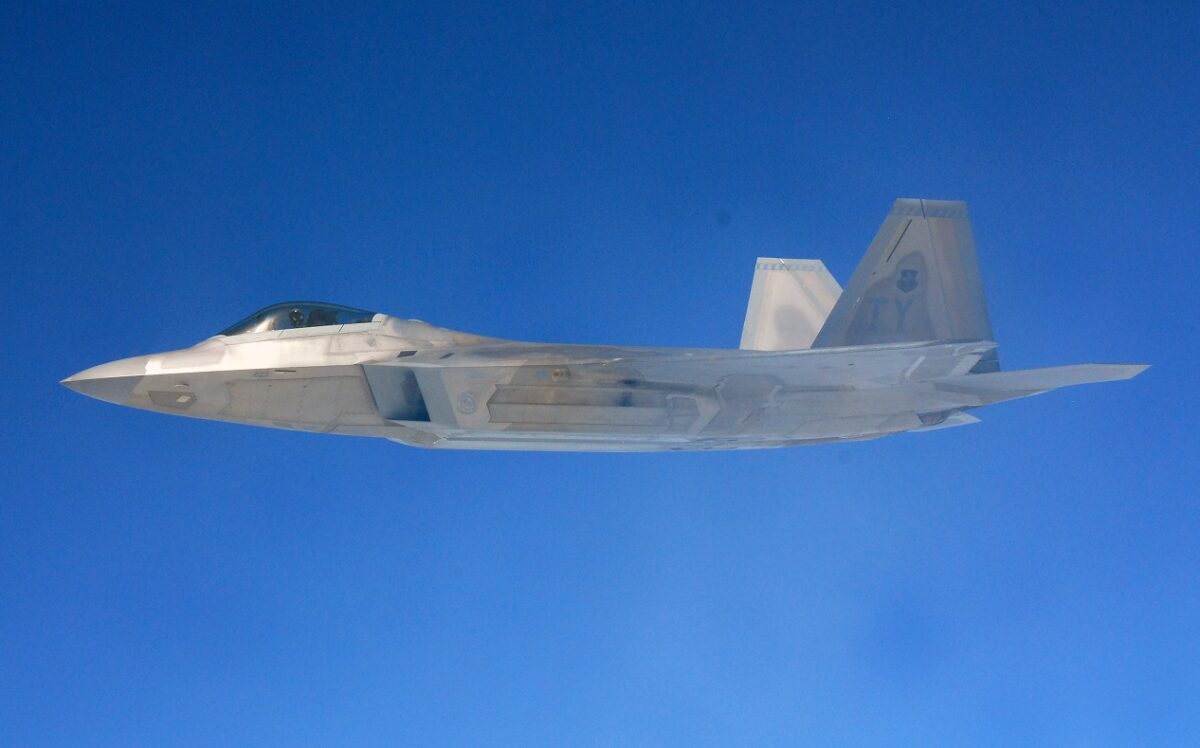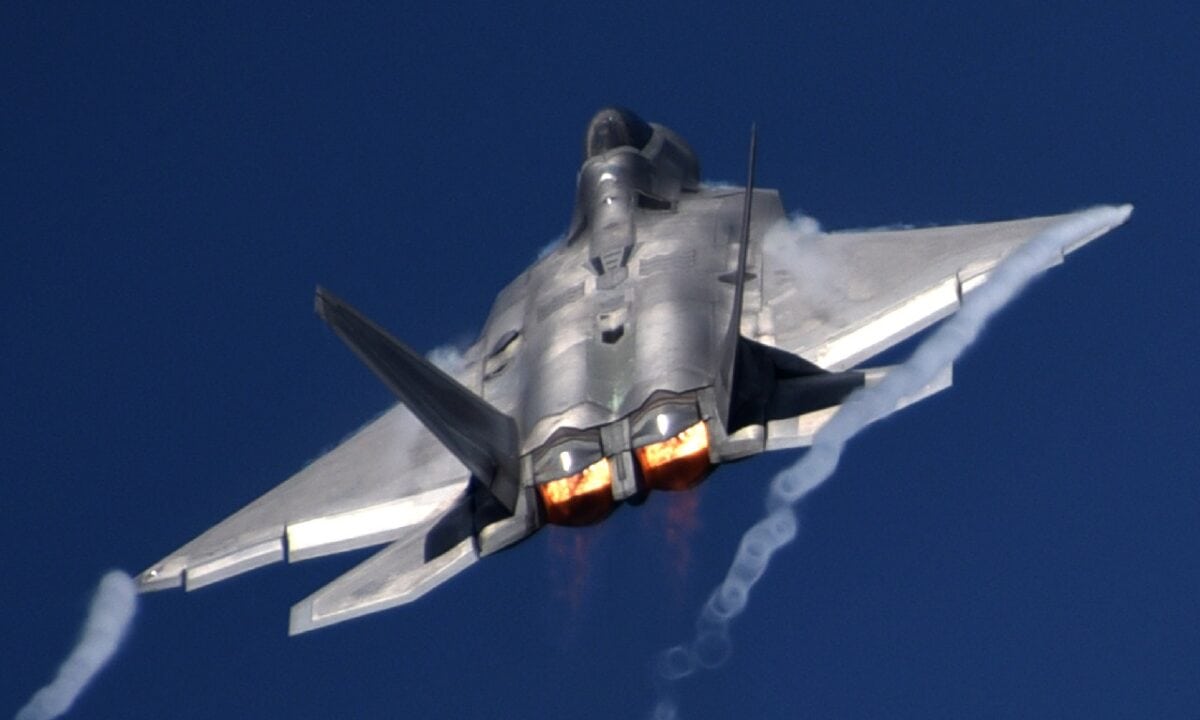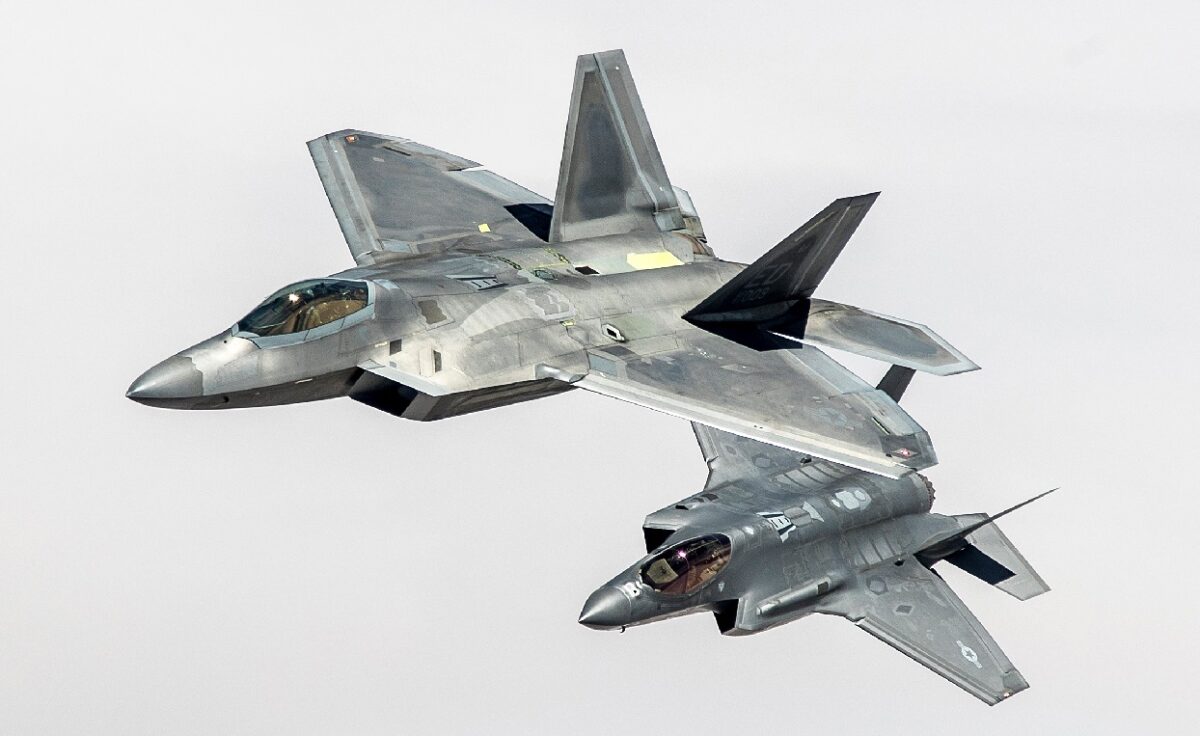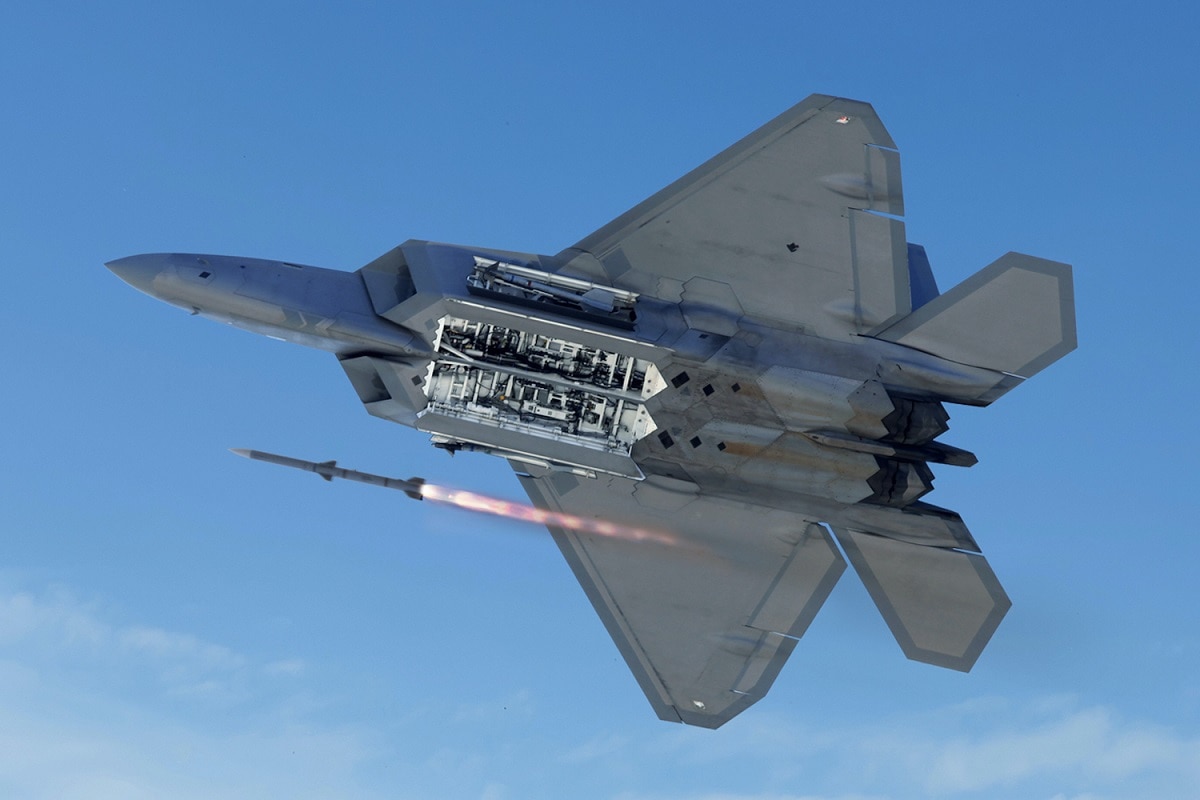The F-22 Raptor is improving its capabilities and various enhancements to the fighter are coming at just the right time. It’s a dangerous era for the U.S. Air Force. Russia is in a war with Ukraine while China continues to use its aircraft to simulate attacks against Taiwan. Air Force pilots must be ready for the possibility of a two-front conflict. This is where improvements to the F-22 come in.
How About a New Medium-range Missile?
The Air Force is now working with the F-22 so it can field the AIM-260 Joint Air Tactical Missile to get an edge in dogfighting. The JATM will have better range than the Advanced Medium-Range Air-to-Air Missile (AMRAAM). As the JATM enters initial operational capability it will replace the AMRAAM by FY 2026.
Better Incorporation of Missile Technology
Major Kevin “Renegade” Autrey, the lead F-22 test pilot for the “Green Bats” 422nd Test and Evaluation Squadron at Nellis Air Force Base, told The Drive, “That’s everything from integrating the missile into our software, the indications we see in the cockpit, the information we can share with the missile, and the way we interact with the missile from a targeting perspective. There’s a lot of new technology in JATM that is much more advanced than our current [AIM-120 AMRAAM] missile’s technology.”
F-22 Needs to Remain In Service Another Ten Years or More
The Air Force needs the F-22 to be an effective platform for at least the next ten years until the Next Generation Air Dominance 6th generation fighter enters service to replace the Raptor. The Green Bats are proving the F-22 can answer the challenge. The test squadron will be integrating some other new improvements for the Raptor.
Evaluators Are Ready to Test New Upgrades Once a Year
F-22s are undergoing an enhancement process known as the Raptor Agile Capability Release (RACR). This program is a once-a-year event that is designed to update the airplane’s software and make some critical hardware modifications. Autrey said that “the idea is if we can modernize the Raptor on a yearly cycle, we can get [the] capability to the warfighter on a faster pace than we have seen in the last decade.”

An F-22 Raptor from the 95th Fighter Squadron, Tyndall AFB, Florida, prepares to refuel mid-flight from a KC-135R Stratotanker from the 134th Air Refueling Wing, Tennessee.
Better Dogfighting Requires Upgraded Targeting
The F-22 goes through a long process of test flights – hundreds of sorties and hours in the air. This gives evaluators a chance to envision ways to improve the F-22’s combat capabilities. The new JATM is not all that is coming to the Raptor. Infra-Red Search and Track (IRST) will enable the F-22 to better engage multiple targets. This will speed up the airplane’s kill chain. The stealth fighter will also get a helmet-mounted display and targeting system, something other U.S. fighters already have.
Congress Chooses to Keep the Raptor Out of Retirement
These improvements will make Congress happy. The Department of Defense had earlier this year submitted its wish to have some older F-22s retired because of high maintenance costs and an increased level of expenditures needed for upgrades. Lawmakers sitting on the House and Senate Armed Services Committee disagreed. They wanted no retirements and a full contingent of F-22s plus the upgrades mentioned above.

A U.S. Air Force F-22 Raptor assigned to Tyndall Air Force Base, Fla., takes off from the Tyndall flightline as part of an asset evacuation due to Hurricane Irma Sep. 8, 2017. Tyndall evacuated its F-22s, QF-16 Aerial Targets, T-38 Talons, E-9A Widgets and other aerial assets in preparation for Hurricane Irma. (U.S. Air Force photo by Senior Airman Sergio A. Gamboa/Released)
China and Russia Forging Ahead with Stealth Fighters
This comes as China continues to develop its J-20 fighter that has stealth characteristics and Russia is working on its Su-57 5th generation fighter. It shows that the United States worries about the air dominance of its F-35 and F-22 fighters. Congress believes the extra cost they are plowing into the F-22 upgrades are worth the money rather than flying more non-stealth fighters such as the F-16 and F-15EX.
So, it looks like the Air Force is upgrading the F-22 before Congress changes its mind next year when the FY24 National Defense Authorization Act comes out. This is good news for adherents of the idea that stealth fighters against Russia and China are better to have, especially in a two-front war.

IFG Family Photo, F-22, A/C 4009, LtCol Lee “Split” Bryant, F-35A, AF-3, Major Jonathan “Spades” Gilbert, F-16D, A/C 835, Major Charles Brantigan & Major Scott “Gins” Rinella, in formation over ISB, Tanker View, 15 May 2019
Now serving as 1945’s Defense and National Security Editor, Brent M. Eastwood, PhD, is the author of Humans, Machines, and Data: Future Trends in Warfare. He is an Emerging Threats expert and former U.S. Army Infantry officer. You can follow him on Twitter @BMEastwood.
Note: We have corrected the headline and apologize for any confusion.

